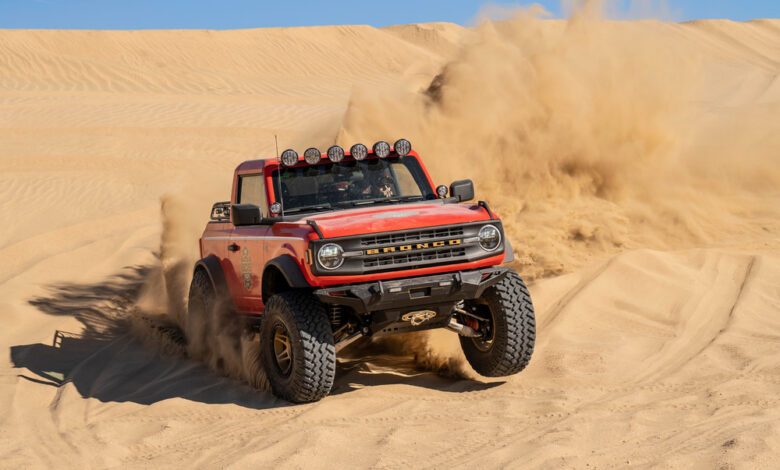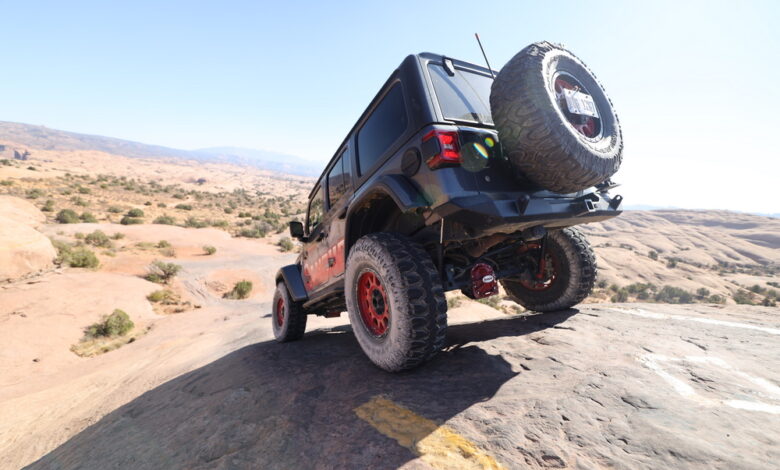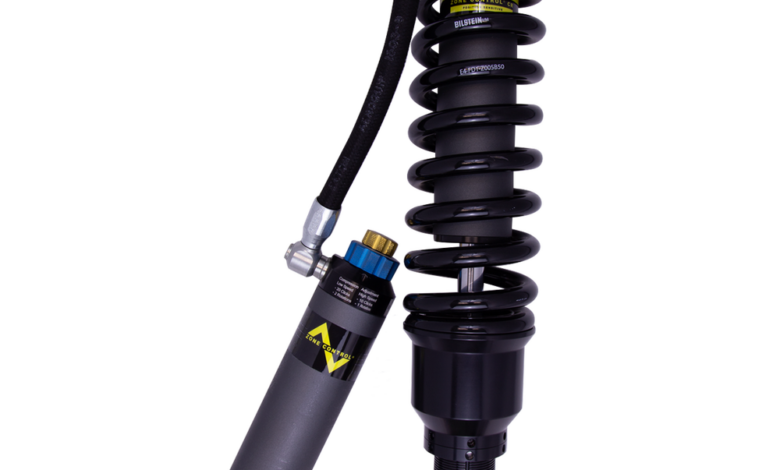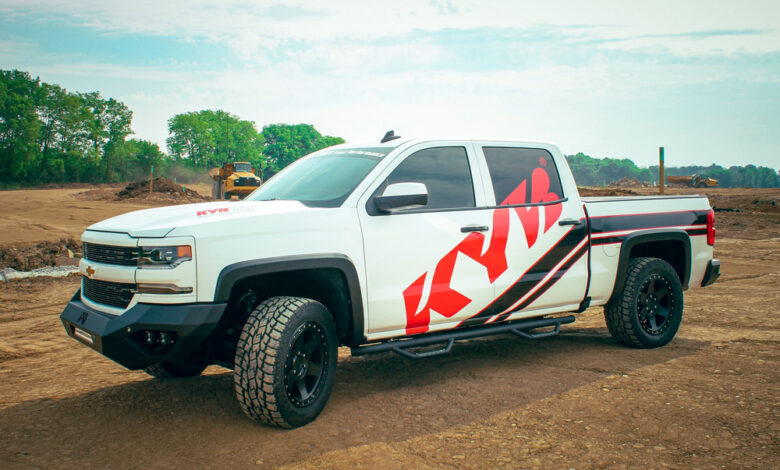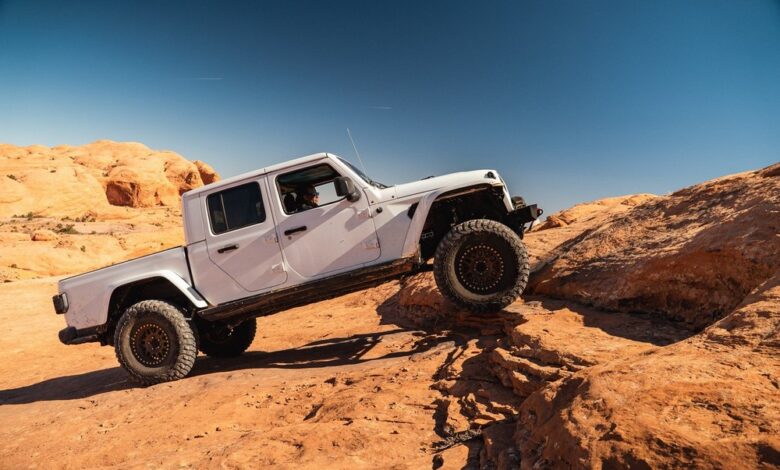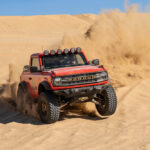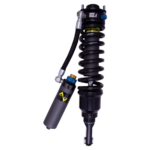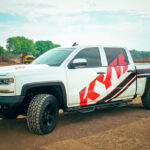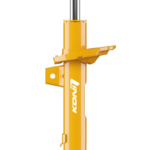Literally and figuratively, these days we could all use a smoother ride, right? When it comes to aftermarket suspension upgrades, performance shocks help soften some bumps in the road.
Whether at the track or on the trail, the proper shock setup provides the stability, control and safety customers seek. Add in specialized tasks such as towing or hauling, and it’s no wonder drivers often turn to the pros for advice and recommendations.
To keep your sales of performance shocks headed in the right direction, manufacturers provide updates on the technological developments and buyer preferences that are trending in today’s suspension market.
RIDING HIGH
Technology in the performance shocks market has been advancing to keep pace with the latest models and features being rolled out by the OEMs.
“In recent years, auto manufacturers have released a wide range of new vehicles, including the Toyota Tundra, Ford F-150 Raptor and Bronco, and Chevy/GM 1500, to name a few,” says Ryan Thompson, brand manager at PVG (Powered Vehicle Group) FOX. “It takes a lot of engineering bandwidth to develop, test and tune each application. When paired with production delays carrying over from COVID, suppliers have yet to be able to keep up with demand.”
Also, and again partly thanks to the pandemic, new markets are growing rapidly.
“Building recreational vehicles that support the outdoor lifestyle has become more commonplace, especially in recent years,” observes Dylan Evans, lead engineer at ICON Vehicle Dynamics. “This is causing a great need for performance shocks for a wide range of vehicle platforms. Customer expectations are at a peak for premium components that perform better, and an added layer is that the OEMs are releasing more advanced packages on newer vehicles, forcing aftermarket technology to make great strides forward.”
Innovations are making manufacturers better, says Michael Bender, engineering manager for Rancho Suspension.
“Increased competition in the marketplace is driving all of us to develop and implement new technologies to keep pushing the performance envelope,” he says.
The results are shocks that really do offer tangible performance gains, says AJ Grasso, sales and marketing manager for Radflo Suspension Technology.
“Many customers may not be aware of how much of an impact a high-quality shock can have on their vehicle’s performance and overall driving experience.”
Manufacturers continue to work on diversifying their lines, says Allen Briere, North America automotive and RV sales manager for KONI Shock Absorbers.
“KONI Shocks has a range of product lines to meet every customer’s needs, so the better you understand what those needs are, the better you are at offering a superior product,” he says. “If you provide a customer with too stiff of a shock or a shock that is too soft and cannot support other modifications on the vehicle, then they will be returning (to complain).”
Current demand is for damping adjustability, notes Steve Von-Seggern, head of marketing and powersports for Thyssenkrupp Bilstein of America Inc.
“More people are using their vehicles for camping, hauling and towing than ever before and they want the ability to adjust the ride for those loads,” he reveals. “We’re answering that demand with products like our 8112 DSA+ that features dual-speed compression adjusters as well as an integrated internal bump stop that’s adjustable. We also offer direct-fit external bypass options with tool-free adjustability.”
Add in the well-known challenges of doing business in 2023, and the shocks market is sprinting just to keep pace.
“There are still supply chain issues that are affecting the performance shock market,” says Andy Castleman, director of product and marketing for KYB Americas. “Consumer demand is very high, and manufacturers sometimes have trouble meeting that demand. KYB has very focused efforts in place to increase our delivery rates, as well as provide fitments for a wider range of later-model applications.”
CUSTOMER COMMUNICATION
Overwhelming demand means extremely thin margins for error, adding an emphasis on shop efficiency.
“A top piece of advice for shops is to ask the customer what their driving preferences are and how they intend to use the vehicle. Is it lifted/stock/lowered? Will it be used off-road or on the track?” Bilstein’s Von-Seggern says. “This will help the shop determine what the customer really needs or doesn’t need.”
Use your knowledge and experience to point drivers in the right direction—even if they initially have ideas for something a little different, says Castleman.
“For example, a customer may state that they want a 3-inch lift for their truck or SUV. Easy, right? Just sell them a shock that provides a 3-inch lift,” he says. “But what retailers should really do is ask why they want a 3-inch lift. Is it merely for cosmetics? Do they use the vehicle for off-roading? Is it a work truck used to haul heavy loads or pull a trailer? These factors can influence the brand and type of shock that will perform best for the customer.”
It takes knowledge and finesse to hit on the trends consumers want to follow while making the proper recommendations for each application, says Briere.
“With so much confusion out there, it is important for both a shop and the consumer to understand what makes a damper good and then purchase wisely,” he says.
Professional outlets often have knowledge of factors that customers fail to consider, Grasso agrees.
“Shops can take the initiative to educate their customers by providing detailed information about different types of shocks, their features and the benefits they offer. For example, they can explain how a performance shock can provide better handling, increased stability and improved ride quality both on- and off-road.”
With that in mind, it’s important that all add-ons work well together, Evans notes.
“Misapplying incompatible components is a huge mistake that some shops make. Avoid the mix-and-match approach led by either the customer or the salesperson simply not knowing any better,” he says. “It’s important to study product specs and, when in doubt, do due diligence to learn the best-performing configurations.”
Ideally, shops won’t undersell or oversell, he continues.
“It’s important to know a vehicle’s capabilities and potential, including the intended use. Configuring a build’s suspension is one of the most crucial elements of any project. It can make or break customer satisfaction and poses a safety risk when done improperly.”
What’s best for the project should always come first, Bender agrees.
“Focus on what the customer wants or needs and don’t only push products that grant the highest profit.”
After all, trust is what the shop-client relationship is all about.
“For brick-and-mortar shops, realizing the value of their service and expertise is essential,” says Thompson. “You don’t have to race to the bottom to match a price. At the end of the day, customers ultimately want value and confidence that they’ve had quality parts installed by experts.”
STRONG SALES
When it comes to increasing sales in the performance shocks market, ICON’s Evans recommends starting by offering shock services for the parts you’re already selling.
“Most performance shocks are fully rebuildable,” he explains. “The customer is likely to return to the shop they purchased from to have them serviced, and if the shop does not provide the service, then it’s likely to lose the next opportunity and potentially a repeat customer.”
That may mean additional training for your technicians.
“Not all shocks are created equal,” he continues. “If we hear of an alleged shock failure, we always drill down to see what the issue might be. In most cases, it’s because the shock was well past its recommended service time, or it had recently been serviced incorrectly.”
Performance shock upgrades are also an easy add-on when selling larger wheel-and-tire combinations, says KYB’s Castleman.
“Original equipment shocks are not designed to dampen the additional unsprung weight of larger tires and wheels, making the vehicle harder to control. Packaging a wheel, tire and shock combination can generate additional revenue while providing your customer with better vehicle control and longer tire life,” he says.
Thompson offers a formula to follow.
“First, understanding the customer’s use is vital to success when upselling shocks. You can then use the various features and benefits to help the customer choose the one that will provide the comfort, control and safety they would expect from a high-quality performance shock,” he says.
The next component is education.
“We know customers are willing to spend the money, but they need to understand how the product will benefit them. Once you know the difference between IFP versus emulsion shocks, how body diameter affects ride quality and why you should choose a dual-speed compression adjuster over a single adjuster, your sales opportunities will increase,” he continues, noting his company has created a “FOX Academy” video series to help with shock sales.
It always comes back to the unique needs of each customer, says Bender.
“Make shock suggestions based on how the customer uses their vehicle rather than what’s the latest trending product,” he says. “Rancho recommends different shocks for different applications and use cases.”
KONI is among the manufacturers that offer lines with various features and price points, Briere notes.
“Educate customers not only on performance level benefits, but also on the durability, warranty and craftsmanship behind the brand. Some customers may want to improve their lap times while others may want a more refined ride, so understanding product ranges will help increase sales.”
Those increased sales may simply require schooling customers on the available products, adds Radflo’s Grasso.
“Shops should prioritize offering customers the option to upgrade to superior shocks that not only provide a better ride quality and increased comfort but are also serviceable and customizable to meet the needs of their unique build. By providing high-quality shock options, shops can ensure that their customers are fully satisfied with their purchase and will likely return for future business.”
